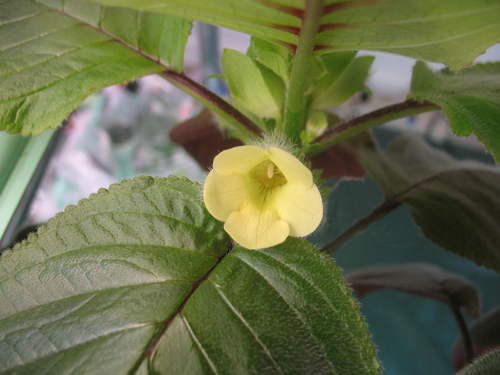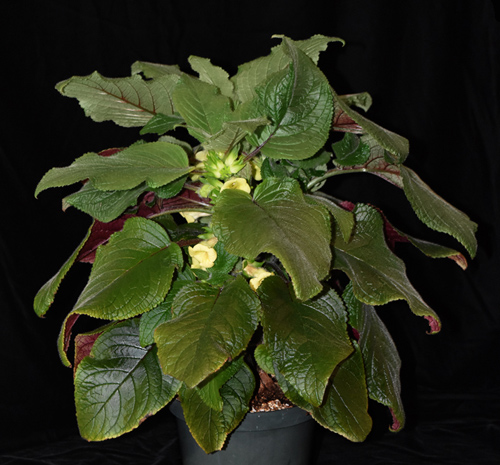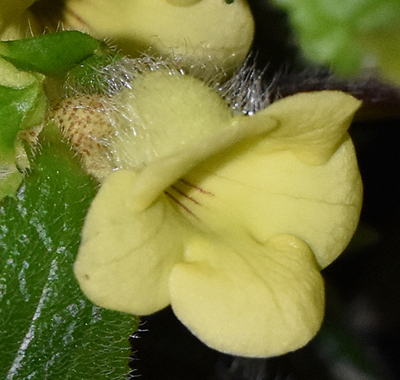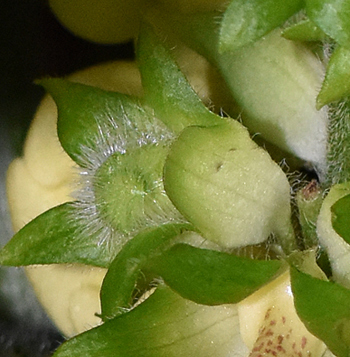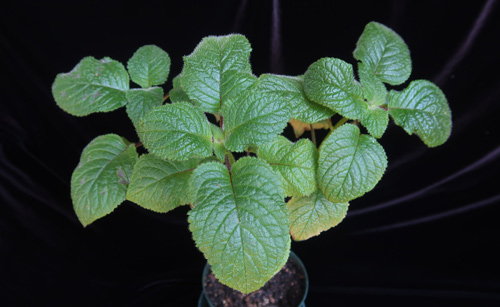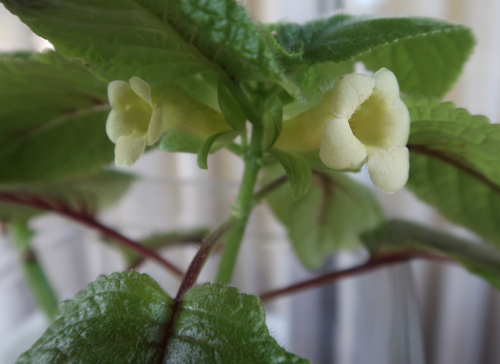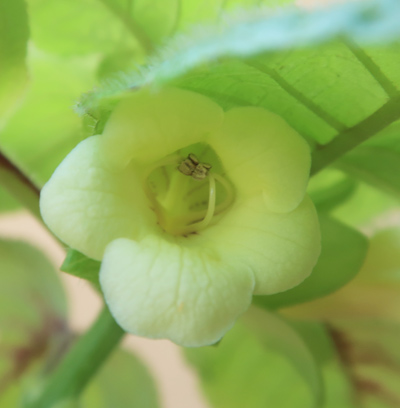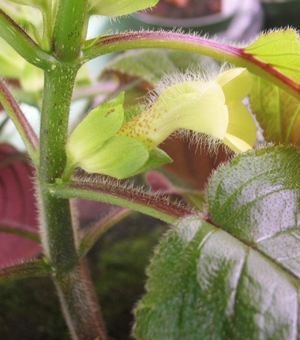
Carolyn's Plant
This flower picture was taken by Carolyn Ripps of her own plant.
The hairs on the flower (not a coincidence, since the species name means hairy) can be clearly seen.
It is not totally evident from this picture, but the stems of this species are squarish in cross section. These stems resemble those of the not closely related Sinningia barbata.
